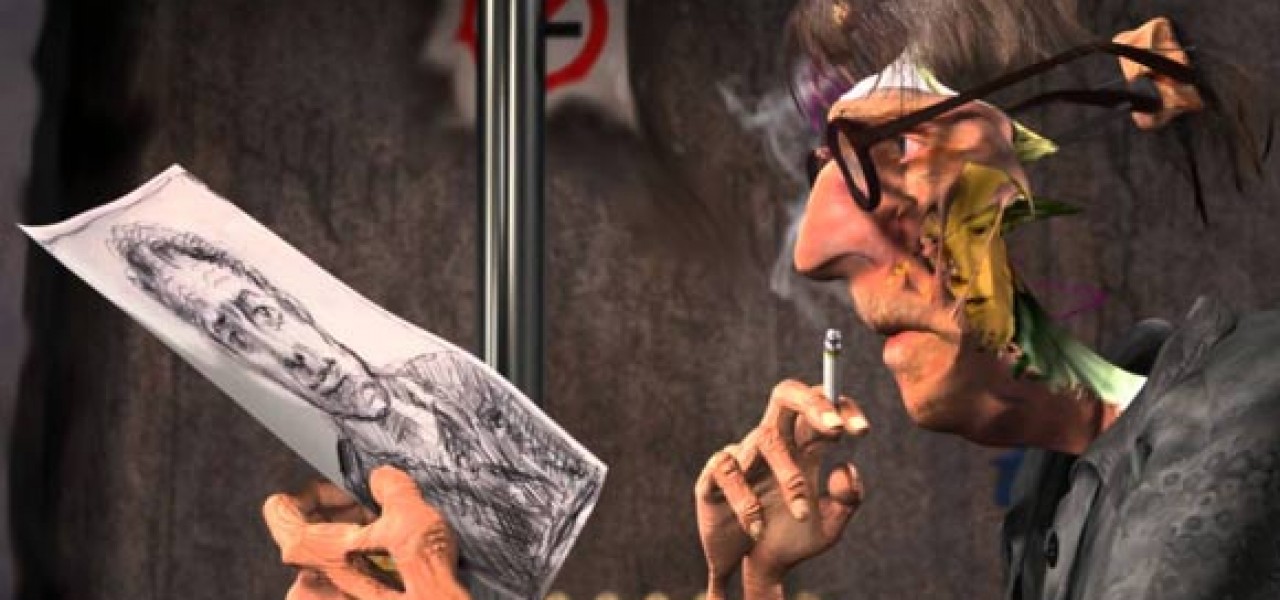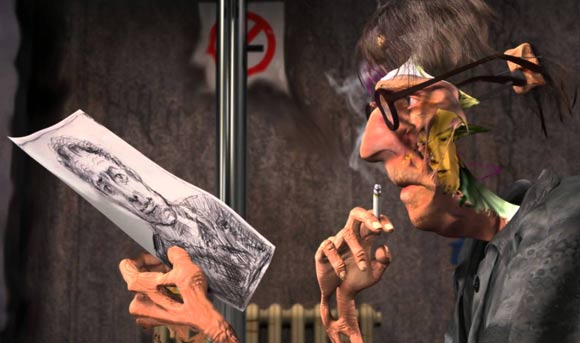

A Review of Chris Landreth’s ‘Ryan’

I saw a screening of Chris Landreth’s latest computer animated film, Ryan, last week. The film is an animated documentary, somewhat in the vein of Paul Fierlinger’s And Then I’ll Stop, where unscripted conversations by real people form the soundtrack of the film. In this case, the subject is Ryan Larkin, an animator who worked for the National Film Board of Canada in the late ’60’s and early ’70’s. Probably his two best known works are Walking (1969) and Street Musique (1971). After the latter film, Larkin had something of a personal meltdown, due at least in part to substance abuse.
Landreth met Larkin when they were both on the selection committee of the Ottawa Animation Festival and Landreth became so interested in Larkin that Larkin became the subject of this film.
Visually, Landreth described the film as “psycho-realism.” Aspects of the visuals are photo-real. Skin textures, in particular, are photographic and reveal pores and blemishes. However Landreth’s goal isn’t realism. He freely distorts characters, props and sets to express the inner states of the characters or to comment on them. In this way, the film is a descendant of German Expressionist films like The Cabinet of Dr. Caligari (1919) or The Last Laugh (1924). Because Landreth is creating everything on screen with software, he has the advantage of a visual continuity and flexibility that directors Wiene and Murnau couldn’t take advantage of.
The film will be screening at the Worldwide Short Film Festival in Toronto later this month and also at Cannes and Siggraph. No doubt it will turn up at other festivals. Personally, I prefer it to Landreth’s earlier films The End and Bingo. It’s definitely worth seeing.
You can read more about the film and view a clip at the NFB website.

